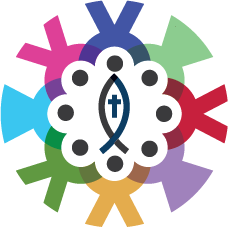Experiences from NSW
The health gap between Aboriginal and non-Aboriginal Australians is widely acknowledged. Poor health outcomes for Aboriginal Australians comes from dispossession, disadvantage, forced separation and legislation. Aboriginals are more likely to be hospitalised for mental or behavioural disorders and mortality associated with mental disorder is more common amongst Aboriginals (Page 429).
Inmates are more likely to have a mental disorder in NSW (46%), substance use disorder (55%) personality disorder (55%) and then there is psychotic illness, major depression. (p.430) (5,6,10). Similar patterns of mental illness have been found in indigenous New Zealand (Māori), Pacific Islander and European prisoners. In Australia the indigenous are 11 times more likely to be imprisoned (Page 430).
In 1991 Royal Commission in Aboriginal Deaths in Custody highlighted the plight of indigenous prisoners and made 300 recommendations regarding social, health and judicial issues. The recommendations focused mainly on post release suicide risk. Remarkably little has been done in terms of research since (Page 430).
A detailed Methodology and Results are provided. In the Results included it is noted on average Aboriginal men (28.9 years vs 31.0 years) and women (27.0 years and 31.2 years) incarcerated are younger than non-Aboriginal counterparts, and men are more likely to have been convicted of a violent offence and women a drug related offence (Page 431).
Mental disorder is lower in Aboriginal men than non-Aboriginal men in terms of affective and anxiety disorder and psychosis. Aboriginal women are more likely to screen positive symptoms of psychosis and have a higher prevalence of affective disorder and obsessive-compulsive disorder. Along with this Aboriginal are more likely to have high or very high psychological distress whereas non-Aboriginal men were more likely to have high or very high psychological distress (Page 431).
Suicidal thoughts and attempts during their lifetime and in the last 12 months occurred with similar frequency in both Aboriginal and non-Aboriginal men and women (Page 431).
These findings are similar to prior studies, what is clear from the studies is Aboriginal women are the most vulnerable group psychologically in the community (432) (21). Aboriginal and non-Aboriginal prisoners did not demonstrate mental health status differences, particularly among men (Page 432).
Prisoner populations both Aboriginal and non-Aboriginal were disadvantaged in terms of poor education, abuse and neglect, unemployment, and parent incarceration. Due to their disadvantage the prisoners were more likely to have poor physical and mental health. (p.433) Aboriginal prisoners were more likely to have been in juvenile detention and more likely to be charged with a violent offence (Page 433).
It is noted that more research is need as psychological and emotional distress may be expressed in a culturally determined manner for which screening is not sensitive. Post-traumatic stress disorder was more than twice as common in women than men which reflects community levels. Prevalence was the same for all prisoners (Page 433).
Many Aboriginal return from prison to isolated areas that don’t have access to services, and this requires further work (Page 433).
The development of national and State standards would assist would allow for the effectiveness of programs to be monitored (Page 434).
Reference: T., Butler, S. Allnut, A. Karimina, & D. Cain. (2007). Mental health status of Aboriginal and non-Aboriginal Australian prisoners, Australian and New Zealand Journal of Psychiatry, Vol. 41; Royal Australian and New Zealand College of Psychiatrists. Pages 429-434.
Assessing the needs of Aboriginal Prisoners
There is a richness and uniqueness about Aboriginal Australian culture. A culture that has kinship systems and a sense of environmental and ancestral connection. This information provides insight into the specific needs of Aboriginal people in custody in terms of their social emotional wellbeing (Page 398).
Aboriginal people have endured many injustices such as dispossession of land, dislocation, and marginalisation. They have a high rate of incarceration they are roughly 2% of the Australian population and comprise 20 to 27% of the prison population (ABS 2016). This study is based in Victoria (Page 399).
Mental Health needs: Most participants (males=68%, females=76.9%) reported having been diagnosed with a mental illness in their lifetime. The disorders give in percentages were as follows:
| Major depressive disorders | Men % | Women % |
| Affective disorder | 32.5 | 46.7 |
| Schizoaffective mood disorder with psychosis | 20.4 | |
| Anxiety Disorders | ||
| PTSD | 14.7 | 46.2 |
| Suicide Attempts or thoughts in last 12 months | 51.4 | 51.4 |
| Current substance abuse | 76.5 | 92.9 |
(Page 402).
The most frequently cited met and unmet needs childcare (92%), treatment (85%), and daytime activities (work, training, or structured leisure activities). Needs whilst incarcerated daytime activities (48.7%), telephone access (45.8%) and company (44.9%) which were similar for both men and women. Common unmet needs Psychological distress (44.5%) and food (40.3%) (Page 403).
Cognitive functioning: 9.1% were registered with Disability Services as intellectually impaired and 12.4% having a registered brain injury. The average score for executive functioning was below that of the broader community with 27% indicative of an executive functioning deficit (Page 403).
Social Emotional Well-Being Needs: Most participants felt connected to their culture “often or always” (males=76.2%, females 80%) and confident in the knowledge of their culture. The results appear to indicate that most participants acknowledge the importance of cultural connection. Males and females indicated the most common cause of stress was substance abuse, followed by for men verbal and physical abuse and trouble with Police was the second greatest stressor in women (Page 403).
Service Usage: Of the individuals with mental illness, 60% of females and 36% of males reported obtained psychiatric treatment whilst in custody (Page 407).
The prevalence of mental illness found in the population mirrored that of research into populations in Queensland and New South Wales. In the participants diagnosed with a mental illness, the majority of females and just over on third of males sought psychiatric treatment during their custodial period. Half the participants reported they had a history of suicide and a quarter reported suicidal ideation in the last 12 months, most commonly in the community not the prisons (Page 407).
An assessment of the needs of Aboriginal offender populations suggested that males and females have roughly the same level of needs (Page 411).
Reference: James R.P. Ogloff, Jeffery E. Pfeifer, Stephane M Shepherd, and Joseph Ciociari. (2017). Assessing the mental health, substance abuse, cognitive functioning and social/emotional well-being needs of Aboriginal Prisoners in Australia, Journal of Correctional Health Care, Vol. 23(4). Pages 398 – 411.

